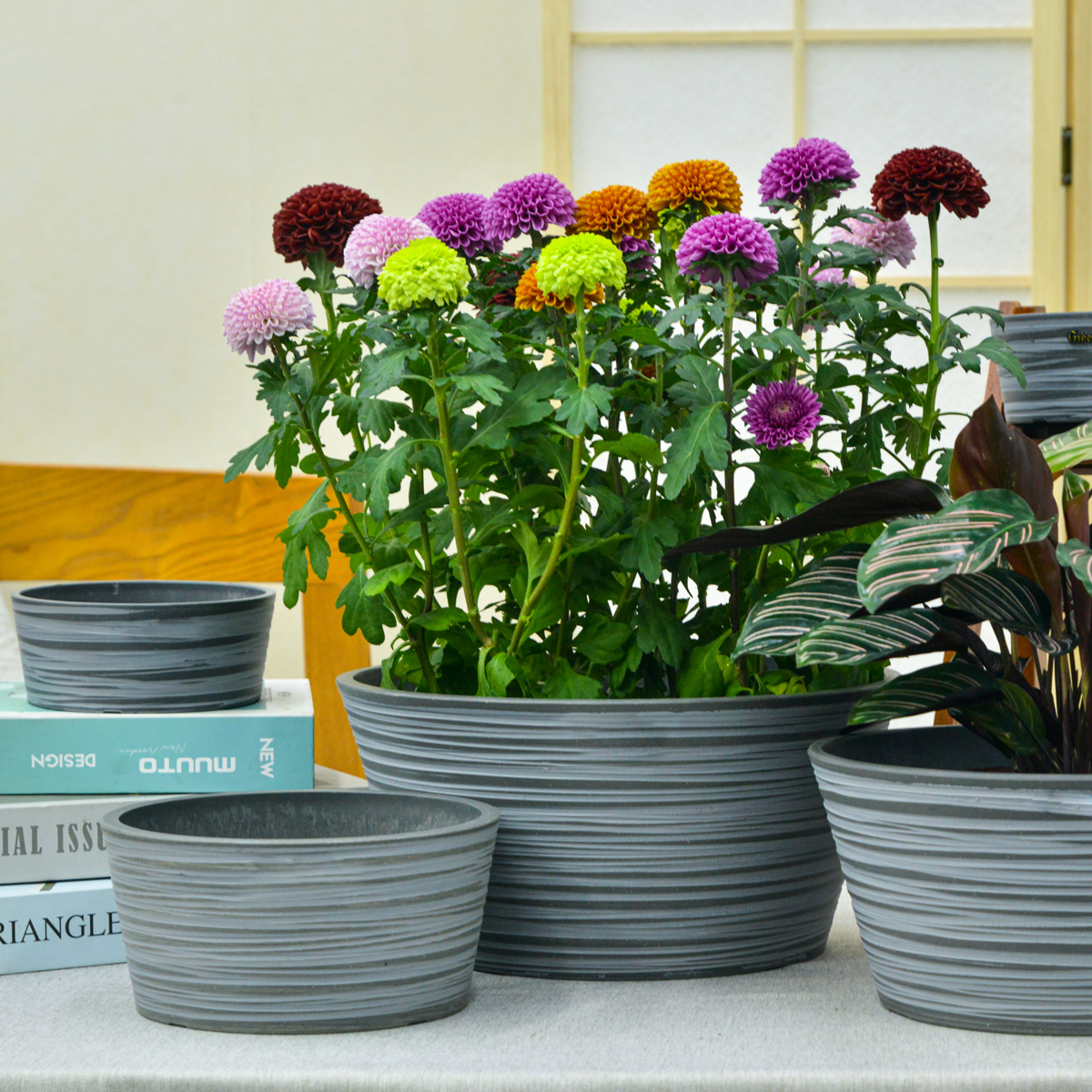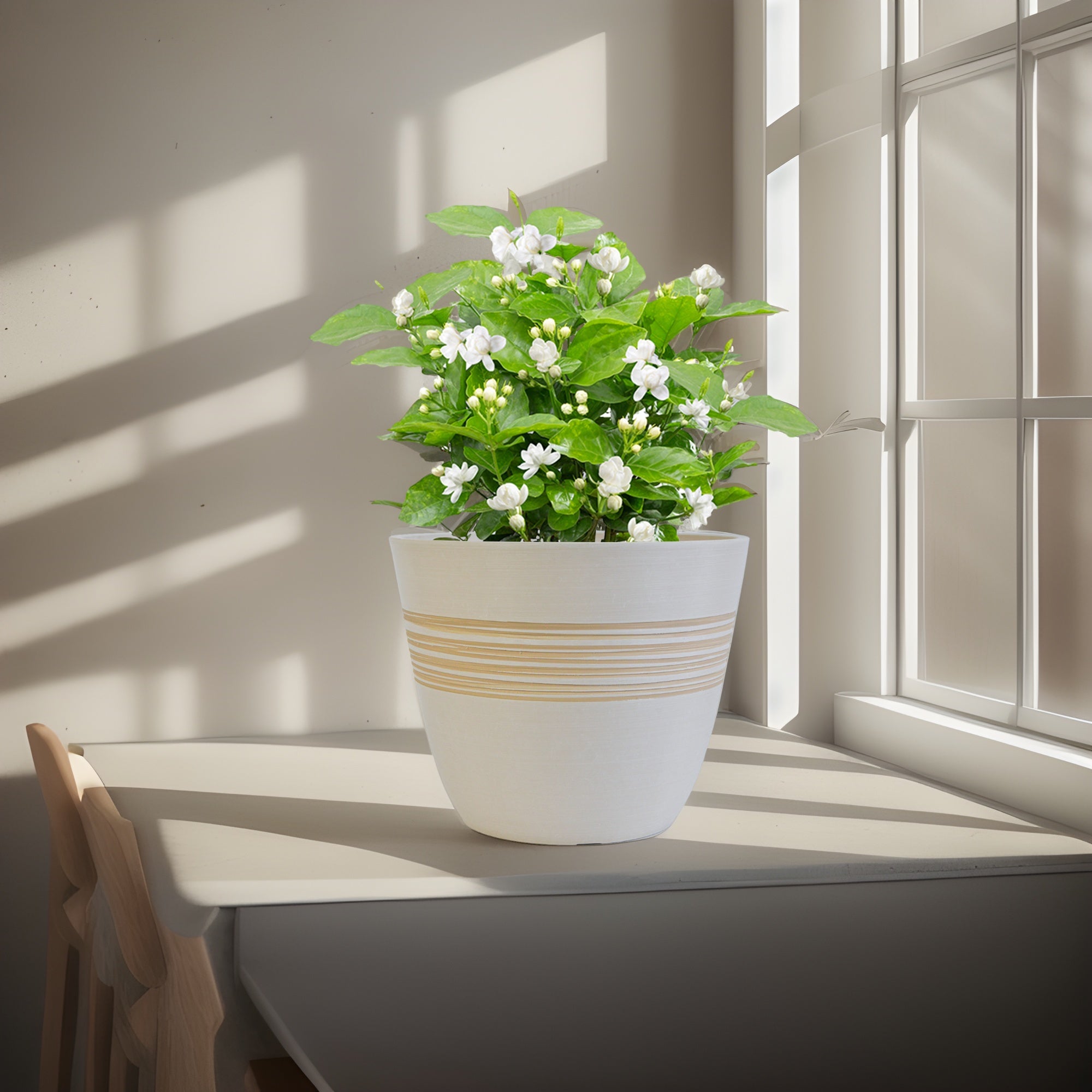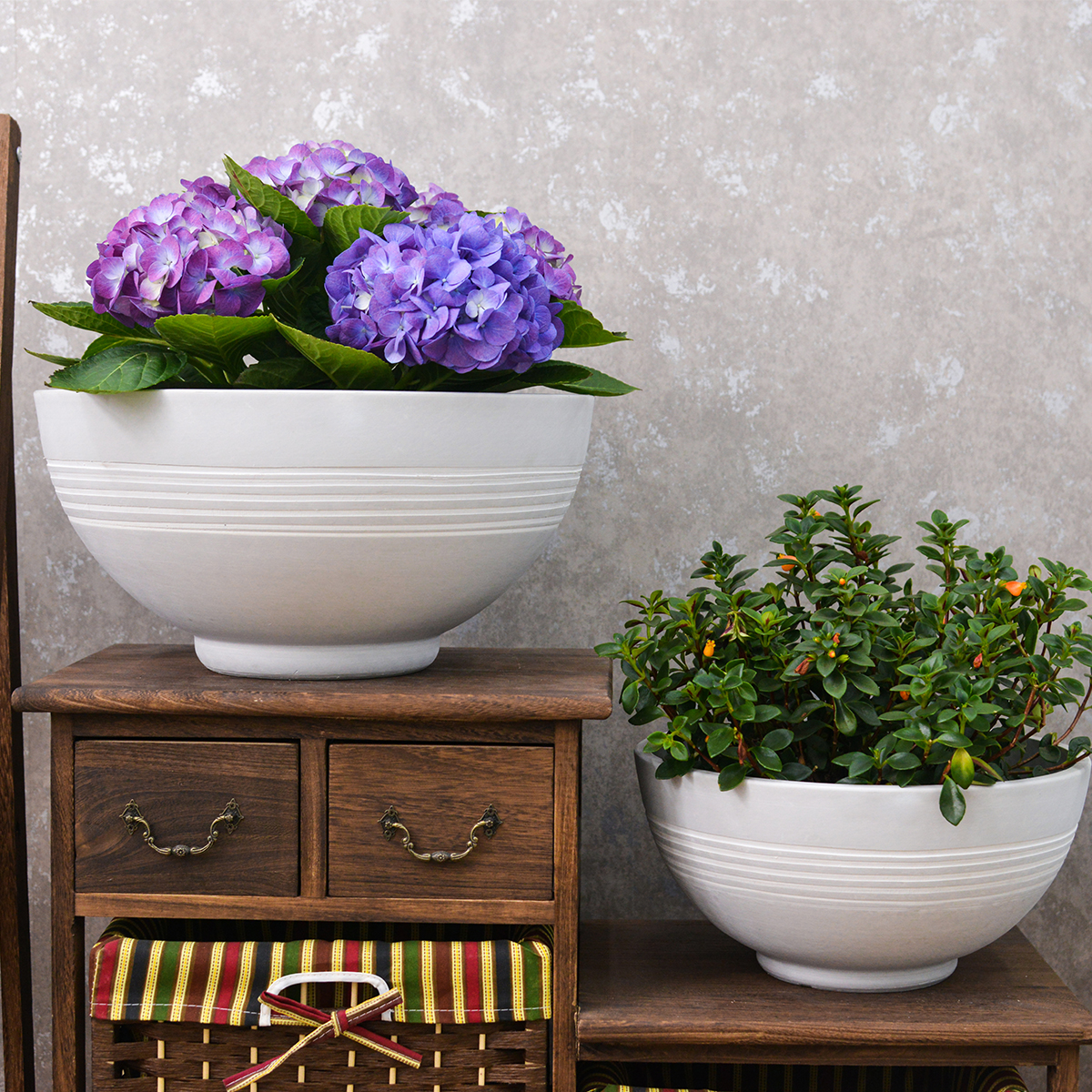Can you overwater with self-watering pots?
Generally, self-watering pots are designed to reduce the risk of overwatering, and when used correctly, overwatering is less likely compared to traditional pots.1 However, it is still possible to overwater plants even with self-watering pots if certain conditions are not managed properly.
Here’s a breakdown of why overwatering is less common but still possible:
Why Self-Watering Pots are Designed to Minimize Overwatering:
- Controlled Water Delivery: Self-watering planters deliver water to the roots in a controlled manner, often through capillary action.2 This prevents you from directly pouring too much water onto the soil surface at once, which is a common cause of overwatering in traditional pots.
- Consistent Moisture, Not Saturation: They aim to maintain consistent soil moisture, but ideally, not constantly saturated soil.3 A well-designed system provides water as the plant needs it, rather than flooding the root zone.4
- Overflow Drainage (Sometimes): Some self-watering planters are designed with an overflow drain ([Result 3]).5This is a crucial feature that allows excess water to escape the system once the reservoir is full, preventing water from accumulating and waterlogging the soil.6 As [Result 3] states, the overflow drain works as a “drainage hole to avoid overwatering.”7
How Overwatering Can Still Happen with Self-Watering Pots:
Despite these features, overwatering can still occur due to:
- Overfilling the Water Reservoir: If you consistently overfill the water reservoir beyond its capacity, especially in systems without a proper overflow drain, the water level can rise too high and saturate the soil from below, leading to waterlogging.
- Using the Wrong Type of Potting Mix: As discussed previously, using a poorly draining potting mix (like heavy garden soil) in a self-watering pot defeats the purpose. If the soil is too dense and doesn’t drain well, it can become waterlogged even with the controlled water delivery system. A well-draining, porous mix is essential.
- Plant Type Not Suited for Consistent Moisture: While many plants thrive in self-watering pots as [Result 2] mentions, not all plants are suitable.8 Plants that prefer drier conditions between waterings, such as succulents, cacti, or Mediterranean herbs, may be prone to root rot if kept consistently moist by a self-watering system. Overwatering for these types is still a risk.
- Poor Drainage Design or Clogged Drainage: If the self-watering pot has a poorly designed drainage system, or if the drainage holes or overflow mechanisms become clogged with soil or debris, water can accumulate and lead to overwatering.9
- Lack of Oxygen in Saturated Soil: Even if technically not “overwatering” in terms of water quantity, if the soil is constantly saturated due to any of the above factors, the roots can be deprived of oxygen.10 This root suffocation is a form of overwatering damage, even if the water reservoir isn’t overflowing.
To Minimize the Risk of Overwatering with Self-Watering Pots:
- Don’t Overfill the Reservoir: Fill the reservoir to the recommended level, and if your planter has an overflow drain, stop filling when water starts to come out of the overflow hole ([Result 3] implies overflow hole indicates “full”).
- Use a Well-Draining Potting Mix: Always use a light, porous potting mix amended with perlite or similar drainage materials, as discussed earlier.
- Choose Plants Suited for Consistent Moisture: Select plants that appreciate consistent moisture levels, or at least are tolerant of them. Research the specific water needs of your plants. Avoid putting plants that need very dry soil into self-watering pots unless you are extremely careful with reservoir management.
- Monitor Soil Moisture (Especially Initially): Even with self-watering pots, check the topsoil moisture occasionally, especially when you first start using them, to ensure the soil is moist but not soggy.
- Allow Reservoir to Dry Out Periodically: Don’t keep the reservoir constantly full. Let it empty and the soil surface dry slightly before refilling, particularly during cooler seasons or for plants that are less water-demanding.11 This helps provide some aeration and prevents constant saturation.
- Ensure Drainage is Clear: Check periodically that any drainage holes or overflow mechanisms are not blocked.
In conclusion, while self-watering planters are designed to be a more forgiving watering method and reduce the likelihood of overwatering [Result 1, Result 2], they are not foolproof. Overwatering is still possible if you misuse them, use the wrong soil, grow unsuitable plants, or ignore basic plant care principles. By understanding how they work and following proper practices, you can effectively use self-watering pots to simplify watering and promote healthy plant growth without overwatering.
11THD
By greenship|2024-08-13T02:52:20+00:00August 13, 2024|Categories: Hand-carving Series|
Modern Plant Pots with Drainage – Indoor & Outdoor Use (6″ Widths)
By greenship-seo|2025-04-10T06:29:43+00:00February 6, 2025|Categories: Hand-carving Series|Tags: Decorative Flower Pots|
Planter for Indoor Outdoor Plants, Set of 2 Modern Decorative Plant Pots with Drainage Hole, Decorative Flower Pots
By greenship-seo|2025-04-10T07:46:01+00:00January 9, 2025|Categories: Hand-carving Series|Tags: Decorative Flower Pots, Self-Watering Pots|
KC3-09k
By greenship|2024-08-16T06:24:36+00:00August 16, 2024|Categories: Hand-carving Series|
11V
By greenship|2024-08-13T03:05:48+00:00August 13, 2024|Categories: Hand-carving Series|
Modern Plant Pots丨Planter for Indoor Plants,8 inch or 10 inch Plant Pots with Drainage Hole,Decorative Flower Pots
By greenship-seo|2025-04-10T08:32:55+00:00January 7, 2025|Categories: Hand-carving Series|Tags: Decorative Flower Pots, Self-Watering Pots|






